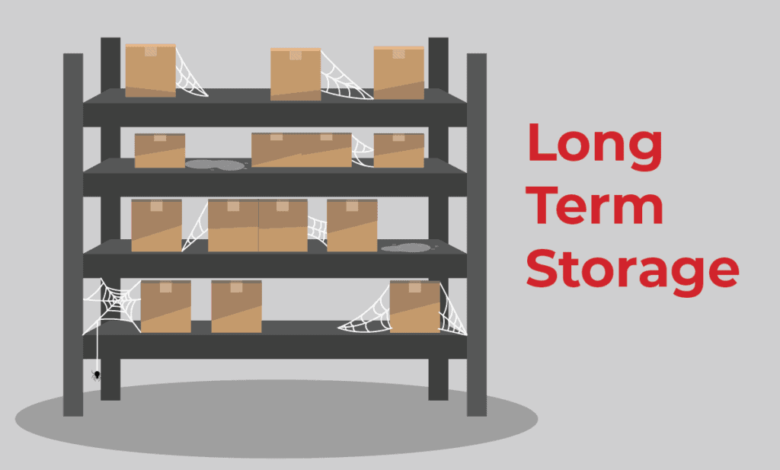5 Essential Items to Pack in Your Storage Unit for Long-Term Storage

Whether in between houses or on a long-term deployment, moving into storage is an intelligent solution for your belongings. Using time-tested packing tips ensures that your items remain safe during long-term storage. Always follow storage facility rules and avoid storing anything dangerous or perishable. For optimum protection, place a canvas tarp on the floor of your storage unit. Leave an aisle to access your items and stack heavy items at the bottom of the boxes for stability.
Sturdy Packing Materials
You’ll want sturdy packing materials if you plan to keep your items in storage for a long time. Invest in boxes that are made of cardboard and can be easily stacked and sealed shut. You’ll also need plastic containers for smaller items like clothing, books, and vinyl records. If you’re storing documents and photographs, consider using acid-free paper to prevent them from yellowing over time. If a box gets damaged during transit or while in storage, it can cause damage to other belongings that are stacked on top of it. Place heavier boxes on the bottom and lighter ones on top to prevent them from crushing other items in the stack. Before placing any furniture in storage units in San Francisco, CA, clean it thoroughly and vacuum or dust it. You may also want to give any leather pieces a conditioning treatment to prevent them from cracking or becoming discolored over time. If you can, wrap each piece in plastic to prevent moisture from seeping into the wood or upholstery. If you must stack furniture, leave a path through the center of your storage unit so that you can access items at the back.
Boxes
The boxes you use in storage need to be sturdy and well-treated to withstand mildew. They should also be a standard size for quickly stacked in your unit. Labeling every box in your storage space is essential so you know what’s inside and where it is when you need it. This will save you time and hassle when accessing something, eliminating the need to open random boxes to find what you want. Plastic bins are the best option for long-term storage because they protect your belongings better than cardboard boxes. You can even buy them with lids to keep everything secure without packing tape. If you’re storing delicate items, wrap them in blankets or towels to prevent damage. Also, place a canvas tarp on the floor of your storage unit to keep moisture and humidity out and promote airflow. This will help your belongings last longer, especially if you’re storing them somewhere that isn’t climate controlled.
Furniture Covers
There are many reasons to store furniture long-term, from preparing for a move to converting a bedroom into a nursery. Whatever your reason, it’s important to properly pack the items you’re storing to remain safe, secure, and in good condition during their stay in storage. Start by thoroughly cleaning the furniture in storage, wiping down upholstery with all-purpose cleaner or disinfectant wipes, vacuuming couch and chair cushions, and washing fabrics like drapes or sheets. This will help prevent mold and mildew buildup during storage and reduce the likelihood of an unpleasant odor when retrieving your furnishings from storage. If your furniture is large and bulky, place it on a pallet or cardboard mat in your unit to prevent it from getting scratched or dented during transportation. Disassemble your furniture items, like removing the drawers from dressers and chairs or the legs from tables, as this will make them easier to transport, take up less space in your storage area, and protect them from damage.
Tape
If you store items for an extended period, high-quality tape is essential. This type of tape seals the boxes or totes securely, preventing dust from settling inside. Labeling each box or tote is essential to know which item is stored. This will make it easier to find items if you need them in a few years. Tape libraries are often used for backup and archiving because they provide massive storage capacity with lower upfront and operational costs than disk or flash systems. They are also great for transferring data to new devices in disaster recovery situations. Before putting any items in long-term storage, research the rules and regulations at your storage facility. Some items, like flammable materials, chemicals, paint, and propane tanks, are prohibited in the facility. Also, don’t store items that could attract pests or mildew.
Labels
Whether you’re storing your belongings for a month while moving to a new home, for a renovation project, or even longer, you must ensure your items are correctly labeled. A simple, descriptive label like “kitchen silverware” or “Christmas tree decorations” will make it much easier to locate these items when needed. It’s also a good idea to create a master inventory list of all your belongings, so you know exactly what you have. Make a copy and keep it somewhere safe, including inside the storage unit, just in case your belongings are damaged by water or pests while they’re in storage. Most organizations and office supply stores sell labels you can stick onto bins or boxes or write on with permanent markers. Decide what labeling system will work best for you — color-coding or numeric coding, for example — and use it as you pack up your belongings. This will save you time when it comes to removing and replacing items in storage at a later date.



